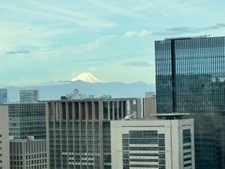
From our room on the 32nd floor of the Mandarin Oriental in Tokyo we can make out mount Fuji in the distance – 124km away. The zoom photo doesn’t do justice to this sacred and iconic mountain, but our hopes of a more impressive shot from the bullet train a few days later – this time only 30km away – are dashed when the cloud moved in to hide it from view.
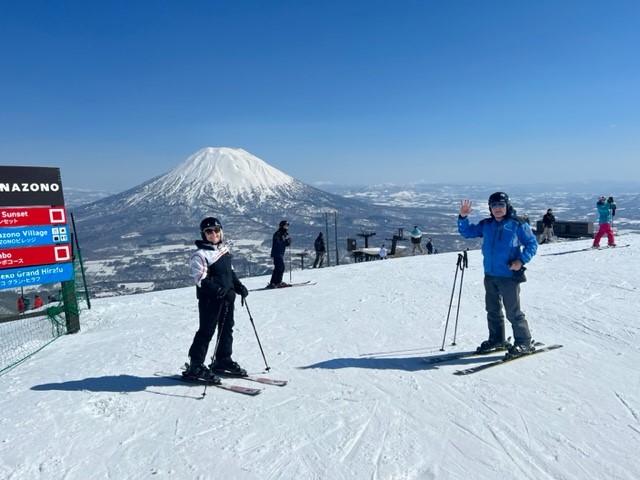
We do however have the close-up photos of mount Yotei from our ski resort in Hokkaido the previous week, which to an untrained eye would easily pass off as Fuji!
To get to the ground floor of our hotel in Tokyo we have to take the lift up to the hotel reception on floor 38 and change lifts to drop us down to the ground where central Tokyo awaits. The lift is an early indicator of Japan’s very caring society – there are two sets of buttons, one set at standing height and another lower set for wheelchair users. And outside we see the ‘tactile’ pavements to help guide the blind and warn them of approaching steps and crossings.
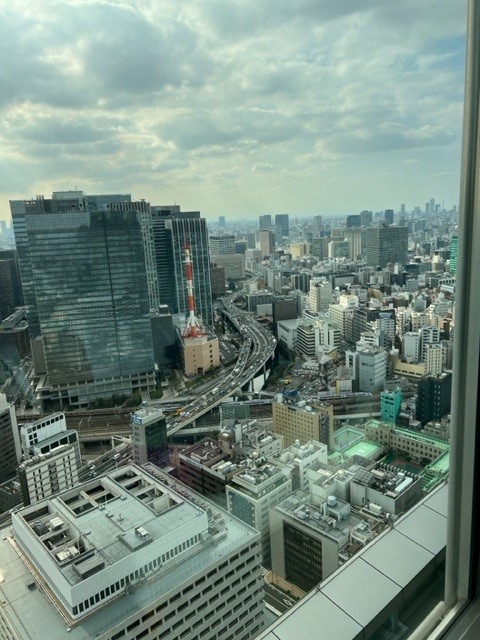
Our way is to the nearby Nihonbashi Bridge, historically the ‘Bridge to Japan’ where the five great highways to the provinces start from the capital city, then known as ‘Edo’. The centre of the bridge still marks ‘kilometer zero’ for distances measured from Tokyo – the equivalent of Charing Cross in London.
From the bridge we can see the city expressway uniquely built above and following the curves of the river as it makes its way through Tokyo. This was the creative way of finding the space needed to improve communications across the city in time for the Olympic Games.
Everywhere we go in Tokyo there seem to be people spending valuable time doing things that don’t need to be done or that could easily be done by a single person. There are two smartly uniformed men at a car park directing cars to the entrance that don’t need directing. Similar uniformed men, often with light-sabre at the ready, stand rigidly at various points along pavements and at office entrances determined to carry out their responsibilities but not quite sure what those responsibilities are. We see a stretcher case at the railway station with no fewer than eight people handling the stretcher and clearing the way – a two-man job in London.
All this feels incongruous in a country that is as successfully hi-tech automated as Japan is. The human inefficiencies seem to be associated with Japan’s high regard for politeness and manners and a desire for full employment. There’s a dignity to low-level service jobs in Japan that we don’t see in the west and Japan would prefer to have its citizens in created jobs than not working at all. The unemployment rate is an enviable 2.4%. There’s a lesson here for us.
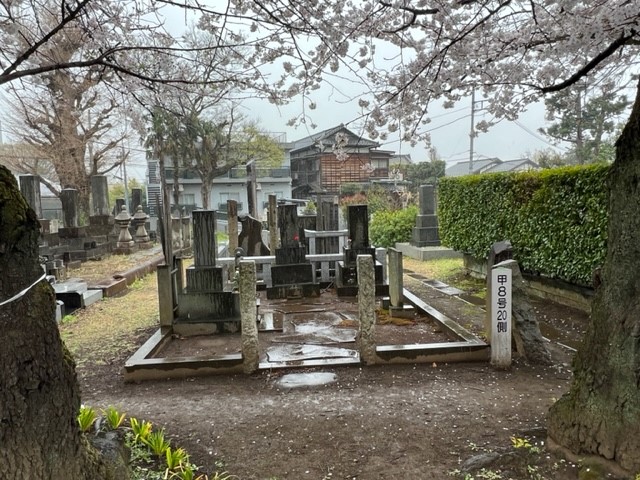
Our next visit is to the Yanaka cemetery. It’s in the area around the Nippori and Nishi-Nippori stations, which escaped the world war II bombing, so is well-preserved. And nearby is the first of many Shinto shrines. Our guide tells us that ‘100%’ of people in Japan are Shinto. It’s credible – Shinto is a way of life rather than a ‘religion’ in the Western sense. Full of traditions and practices rooted deep in the Japanese soul and setting their values for everyday life.
One lovely tradition is the Obon festival from 13th to 15th August each year. The festival marks the return of deceased ancestors to Earth reminding everyone of the bonds between the living and the dead. Families throughout Japan return to their natal homes at this time to perform ceremonies, light fires and lanterns to guide the spirits home, and remember and cherish their ancestors. During Obon, people also clean and decorate the graves of their ancestors and perhaps talk to them and update them on events that have occurred over the previous year including births and marriages.
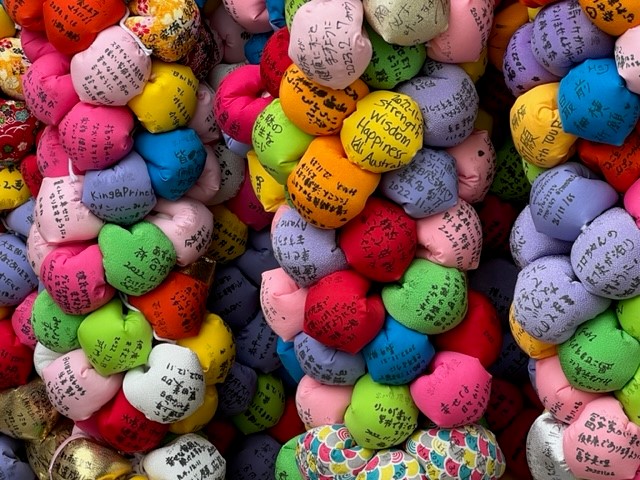
It’s said that Shinto has 8 million gods. But this number isn’t to be taken literally, it simple means ‘an un-countable number’. Everything has a god, and this seems to open up the possibility of specialist shrines where people can ask for dedicated assistance on virtually any problem.
The Kamigami shrine, set against the northern hills of Kyoto, is dedicated to all things ‘hair’. From a simple stand hang hundreds of messages – typically a colourful image on one side and the written plea to the hair god on the other.
It doesn’t seem right to pry by reading these very personal requests, but, as with most things today, they are there for everyone to see on the internet:- “May my hair be beautiful for ever and may I find hair stylist that can give me a beautiful cool hairstyle”; “May father’s hair grow thicker”; “May my brother’s hair increase and he get married”;……..………
Potentially of even greater help is the Yasui Konpiragu shrine in the geisha district of downtown Kyoto, dedicated to breaking off bad relationships and initiating new ones. Aspirants come here to gain the extra strength to finish with their partner or work out how best to resign from an unrewarding job. One such supplicant reported: “Right after I visited Yasui Konpiragu, my office burned down and the company went out of business. Sometimes the gods are a little clumsy, so it’s a good idea to be careful what you ask for.”